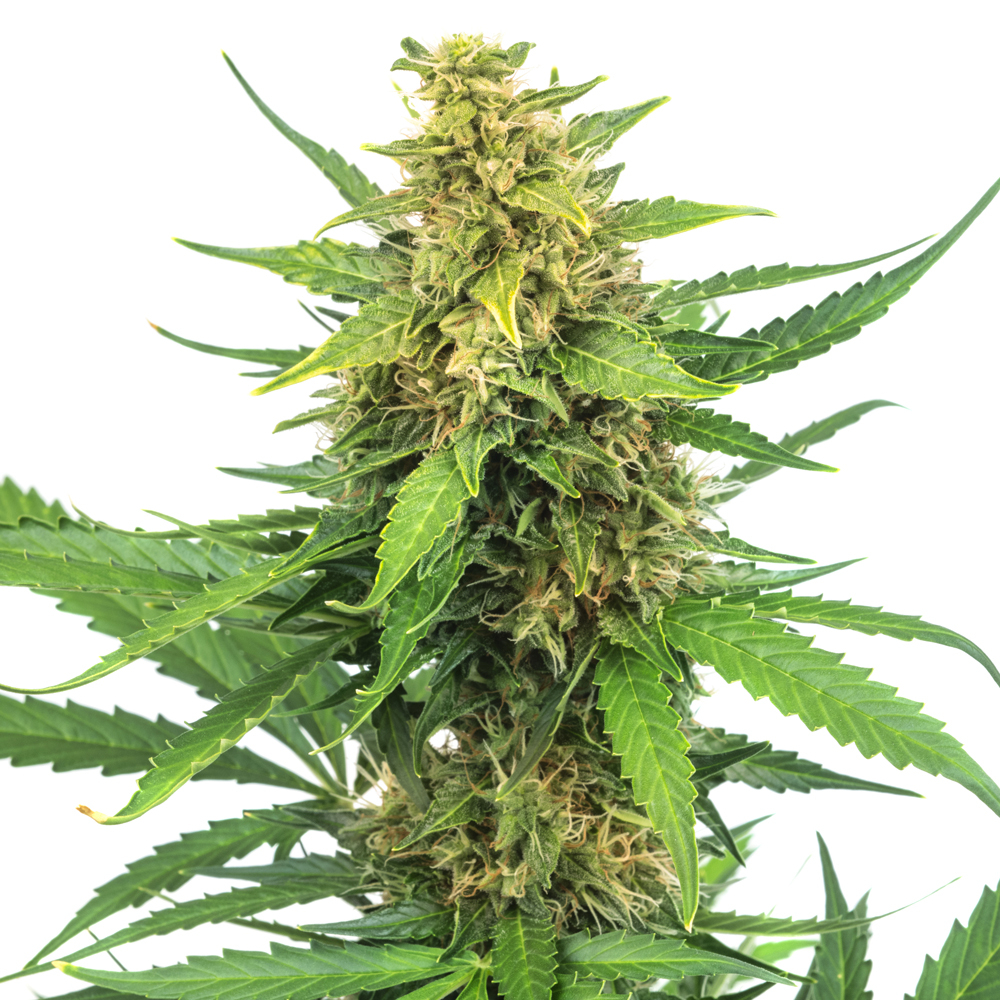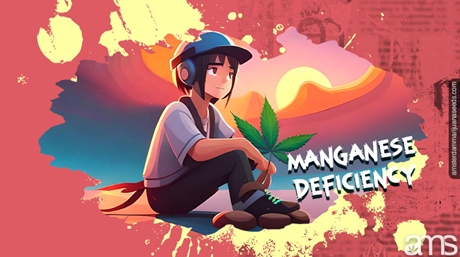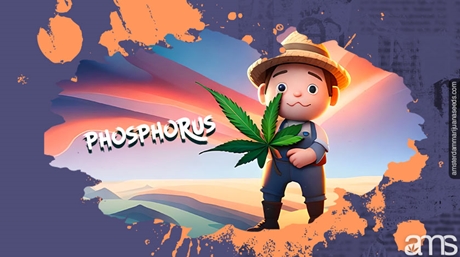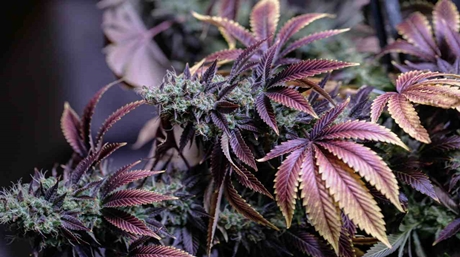Table of Contents
- The Role Of Potassium In Weed
- Potassium Requirements In Various Stages Of Cannabis Life
- Potassium Deficiency
- What Are The Factors That Cause Potassium Deficiency In Your Weed Plants?
- How To Recognize Potassium Deficiency In Weed
- How To Solve Potassium Deficiency In Weed
- Tips On How To Prevent Potassium Problems In Weed
- Potassium Toxicity
- Bottom Line
Potassium is one of the three primary macronutrients crucial for weed development.
The macronutrients play different roles in a plant, including promoting the steady growth of your cannabis crop. They also maximize your plants’ genetic potential, that guarantee quality yields.
Any cannabis grower desires to harvest a product with high CBD, THC, and the best profiles ever. That’s what macronutrients like potassium do. Potassium will additionally impact your weeds’ root development, budding process, flowering, and overall plant health and vigor. The element is required all through the growing period and in large quantities.
The only time your crop will not need potassium is at the maturity stage. That is when you drain the nutrients from the plants to avoid affecting your weeds’ profiles. This guide aims to reveal to you more about this macronutrient and its purpose in your plants. We will also show you how its deficiency affects your crop, how to recognize and fix it.
The Role Of Potassium In Weed
Potassium is a significant nutrient that plays various roles in your plants. From seedlings to flowering, your plants need potassium to thrive. In detail, here are the leading roles of potassium in your weed crop;
Photosynthesis
Photosynthesis involves the conversion of light to energy. The process is essential in plants as a source of food for your weed. It also gives the plant oxygen for survival. Photosynthesis allows your plants to synthesis both organic and inorganic compounds. Its importance is another whole topic, as it is one of the most critical processes in a plant.
Nutrients Intake
Without potassium, your plants will not take in nutrients from the soil. The element facilitates the transportation of all the nutrients from the roots to all the other plant parts.
Potassium Builds Resistance To Frost
Potassium will benefit you greatly if you grow outdoors in extreme weather like unprecedented frost. Your plant will persevere and grow to maturity. This is not mean that if you supply your crop with potassium, you will not offer your crop extra protection from frost. If the unexpected comes, get a shade and also enclose your garden to protect your cannabis crop. Provide them with enough light, humidity, and warmth until maturity.
Carbon Dioxide Regulation
Plants breathe in carbon dioxide and take out oxygen. This process takes place in the daytime when photosynthesis is active. At night, they breathe in oxygen and give out carbon dioxide. Your plants use pores on their leaves, known as stomata, which have to open and close to breathe in and out, respectively.
Without potassium presence, the exercise is futile. First off, the stomata will not open or close. Whatever happens to you when you become sick and can’t breathe is what happens to your weed. Lack of air is fatal. If your plants can’t breathe, they die. Potassium regulates CO2 uptake through the opening and closing stomata.
Increasing Bud Density
One of the ways to achieve bud density is by giving your plants enough potassium. The nutrients also boost the formation of terpenes and other profiles during the bud formation.
Potassium Triggers Enzyme Activation
Enzymes are essential for metabolism or chemical processes in a plant. The processes include transpiration, photosynthesis, and the building of tissues, among others. If the enzymes are not active, these vital processes slow down or stop. Potassium activates the enzymes. Any deficiency can lead to stunted growth or eventual death of your plants.
Production Of Adenosine Triphosphate
Potassium helps plants to produce Adenosine Triphosphate (ATP). This is a crucial substance with various functions in the plant cells. It is in charge of cell structure and development. In the cell, that is where the formulation of all the genetics takes place. If potassium lacks, ATP and its processes stop too.
Potassium Requirements In Various Stages Of Cannabis Life
1. Germination
All seeds do not require any nutrition supplements during germination. Any potassium in the growing medium will be utilized after germination. With other cannabis-growing mediums such as hydroponics, you can supply potassium after germination.
2. Vegetative Stage
Shortly after germination, your crop begins to shoot actively. Soon, it will form a canopy. Nutrients and water intake increase. Potassium requirements are at the peak for;
- Enhancing respiration and photosynthesis
- To regulate carbon dioxide intakes through closing and opening of stomata.
- Potassium allows water and other nutrients intakes.
- With the correct dosages, potassium increases resistance to diseases.
- Potassium facilitates the budding process in preparation for active flowering.
3. Flowering Stage
This is a crucial stage in weed development. It reveals your potential yields. If the flowering plant doesn’t get enough potassium, that affects the results. Potassium helps your plant to;
- Absorb water through the root system.
- It helps the flowers to develop fully and bloom well.
- Aids in metabolic processes.
- It helps the plant to take advantage of air and light for respiration and photosynthesis, respectively.
- Potassium builds your plants’ resistance to diseases.
Potassium Deficiency
When your weed plant doesn’t have enough or any potassium in its system, it develops warning signs. Your soil may have potassium, but the roots are not sucking any. Your plants begin to suffer. They get stunted growth or die of starvation.
What Are The Factors That Cause Potassium Deficiency In Your Weed Plants?
Studies show that various factors cause potassium deficiency in weed. Here are some of the factors you need to beware of:
1. Inadequate Amounts
If you have not supplied your crops with NPK, a deficiency will occur. This happens to growers who use compost manure. A significant setback with compost is that it may miss macronutrients.
Prior testing your manure for potassium is crucial. You could be making the wrong assumption that your compost has potassium. NPK is an excellent combination that is available at your garden store. It has all the plant needs for growth and development.
2. Excess Calcium Or Lime In The Medium
Excesses of calcium and lime in your medium will block the absorption of potassium. Like excess potassium blocks absorption of other nutrients, so are calcium and lime. The bottom line is to balance your nutrients so that your plant utilizes every bit of it.
3. Acidic Medium/Water
For weed, an acidic environment is anything below 6.0. Weed roots will not suck in the feeds if the pH is below 6.0. A test of your soil or other substrates will reveal the pH. If it is low, aluminum sulfate will solve the problem. Conduct a test of your irrigation water. It could be acidic too. Treat it at the reservoir to ensure what you drench your plants has a pH between 6.0 and 6.5.
4. Poor Aeration
Poor aeration in your medium means a shortage of oxygen. Oxygen facilitates the absorption of nutrients by the roots. If, say, the soil is waterlogged, it will not allow air to move freely. The result is root rot and poor potassium absorption.
How To Recognize Potassium Deficiency In Weed
Spotting potassium deficiency in weed is a process. This is because the signs have many similarities with other deficiencies. For instance, a mere yellowing of leaves may be magnesium or calcium deficiency. Besides the stunted growth, tiny buds, and a handful of flowers, there are other symptoms of potassium deficiency, and those are distinct from others. To make it easy to diagnose, go through these steps of potassium deficiency evolution;
- Brown spots appear towards the leaf center.
- The spots begin spreading to other parts of the leaf.
- Chlorosis begins
- The leaves curl-ups
- The yellow color turns brown, an indication of death.
How To Solve Potassium Deficiency In Weed
Solving potassium deficiency early enough before the irreversible happens will help your plants to recover quickly. Unlike other nutrient deficiencies, you will find it easier to fix. That’s because the supplement is readily available and dissolves faster. In the right conditions, the roots absorb it superbly quickly.
With a gradual increase in the growing medium or water, your plants will slowly suck in the required doses and fully recover. Spiking up lots of potassium at a go is equally not helpful as it blocks other nutrients like calcium, nitrogen, and magnesium. Your focus should be to treat the deficiency and enhance absorption of other nutrients.
Also, excess potassium leads to nutrient burn. Add the nutrients starting with a low dosage and gradually increase while observing how your plants respond to the feeds. The noteworthy point is that you will not redeem the leaves that suffered the deficiencies. This tells you to watch out for the new shoots. If you notice similar symptoms, you haven’t solved the problem.
Check out your growing medium and water pH to rule out the acidity. Do not give up. Do anything at your disposal, including extensive research on cannabis growing. Cannabis cultivation requires that you acquaint yourself with several processes to solve problems as they come.
Besides popping into your garden store and picking up NPK fertilizer, there are several other sources of potassium. Most of them are organics that will leave your growing medium rich and neutral in terms of pH. Here are some of the sources of potassium;
Compost Manure
Potassium is readily available in your compost. If you add in banana peels, vegetable waste, and other fruit peels and craps, you will be assured that the nutrient is present. Adding these excellent organics to your soil will supply you with water-soluble nutrients, among others.
Wood Ash
Also known as potash, this serves as a classic potassium fertilizer. It is made of hardwood ash and fixes the deficiency by adding it directly to the soil. During the compost manure preparation, you can add it to the other ingredients to increase your potassium content.
Greensand
We source this special sand from seabeds, but it’s available in garden stores near you. It contains high concentrates of contains potassium, among other minerals. The best way to use greensand is to mix it with your compost to enrich it with potassium. If you do not have the compost, apply it directly to the soil. Be careful not to add excesses.
Potassium Sulfate
Also referred to as sulfate of potash, this is an organic supplement for growing weed. It is also free from chlorine and a great source of potassium.
Kelp Meal
This is a mixture of Kelp and seaweed. It is available in powder or liquid form. Besides a great source of potassium, kelp meal promotes your weed growth by boosting the root system, rich foliage, and abundant produce. The formula also stimulates soil bacteria and helps to improve aeration.
Cocoa Shells
Coconut and cocoa shells are rich in potassium. Grind them and apply them directly to your medium or add to the compost to enrich it with potassium.
Muriate of potash
This is also called potassium chloride. It is a natural source of potassium, but it contains chlorine. Many cannabis growers opt for potassium sulfate. That is because chlorine kills good microbes that are essential for organic farming. If you have no other alternative, use potassium chloride sparingly.
Granite Dust
This is an inexpensive way to treat potassium deficiency. Granite dust releases potassium slowly into the soil. It also provides other nutrients but is essential for slow fixes. You can add it to your soil or coco coir before planting your weed. It will slowly release potassium throughout the growing period.
Tips On How To Prevent Potassium Problems In Weed
Experienced marijuana farmers have learned the art of growing the weed. One of those is the prevention of various issues while cultivating the crop. After learning potassium deficiency, its causes, and how to fix the shortages, we have a list of things you can do to prevent these problems. Here are the tips;
1. Dosage
Every marijuana supplement comes with its dosage. The dosage recommendations cover the different stages of weed life. What you apply at the vegetative stage is not the dosage at the flowering stage of life.
The simple rule of nutrients application is to stick to recommended feeding schedules and doses. This will prevent problems like deficiencies and excesses. This rule does not only apply to potassium but all other nutrients.
2. Procure Reputable Soils
If you opt to buy soil medium for cultivating marijuana from garden stores, make sure it is a reputable source and brand. Some scrupulous individuals pack untested soil from their backyard and sell it to unsuspecting growers. Such soils do not have the nutritional requirements for growing weed.
Sometimes, the soil could be acidic or contain pests and diseases. Reputable brands test their soil and treat any harmful microbes and problems. They also lower the pH and add all the essential nutrients that your marijuana plants require throughout the growing period. You will need to add a boost to the good soils.
3. Test And Treat Your Gardening Soil
If you already have the soil substrates, say in your backyard, do not go out with your weed seeds to sow and expect a good yield. Before planting, test your soil for potassium and other nutrients. Get the experts to check the presence of pests and diseases as well as pH. That way, when you apply your nutrients, they will be sufficient and no excesses. We recommend that you test the soil regularly and frequently to know the potassium levels. Do so for other nutrients and pH too.
4. Be Keen On Any Deficiency Signs
A cannabis grower has a hawk-eye to spot deficiency or toxicity signs. That helps you to fix issues when they are not pronounced and beyond repair. Take a close look at your plants daily to spot out any abnormalities. The parts to inspect includes the leaves, stem, and shoots.
5. Master The Various Nutritional Requirements
Nutritional requirements are specific to weed strain. Some strains like autoflowers require light feeds, while others like the regular strains are heavy feeders.
6. Consider Hydroponics Cultivation
Sometimes you do your best to prevent potassium and other deficiencies, but the problems persist. Consider shifting from soil and coco coir substrates to hydroponics. A hydroponics system has a reputable control of potassium deficiency. Your buddies will suck in all the available doses of nutrients controllably.
Potassium Toxicity
We have taught more about potassium deficiency, but a critical topic remains about excess potassium application in your weed garden. Too many nutrients will turn toxic. Once you solve the potassium deficiency in weed, you have to conform to the recommended dosage.
Excesses result from overfeeding your medium with potassium-rich supplements. Whenever you overfeed your plants, they will show several signs. Here is how to recognize excess potassium;
- Thin-bladed top leaves
- The Lower leaves will develop brown spots and begin to curl.
- Yellow leaf margins and tips.
- Brown coloration of leaves indicating burns.
- Drying out.
- Magnesium, nitrogen, calcium, and other deficiency signs start to show (this means potassium has blocked other nutrients’ absorption)
If you notice the toxicity signs, that is an indication that your plants are at risk. You have to take appropriate measures depending on the medium. These are the two ways how to fix the excesses;
1. Soil Medium
Flush the soil with pH-balanced water and stop the potassium feed for a week. The plant will use the absorbed potassium until the levels get low. Start afresh by feeding with the appropriate levels.
2. Hydroponics And Coco Coir
Like the soil medium, the only remedy is to flush the system with pH-balanced water. Add potassium-free and non-acidic water into the reservoir. After a week, the plants will have utilized the potassium in their systems. Supply potassium freshly, and be sure, to begin with, low doses. Increase gradually to the recommended levels.
Bottom Line
Weed cultivation is a learning process. You now have the basics of these essential nutrients at the palms of your hand. Our guide has taught you that potassium deficiency in weed robs your plants’ resistance to diseases and frost. The deficiency also takes away excellent yields as the shortage takes a toll on the budding density and size.
As a keen weed grower, you will spot the potassium deficiency signs on time and fix that before the irredeemable situation. Be sure to follow the application guidelines for each strain. Read and master out tips to become a happy grower!















